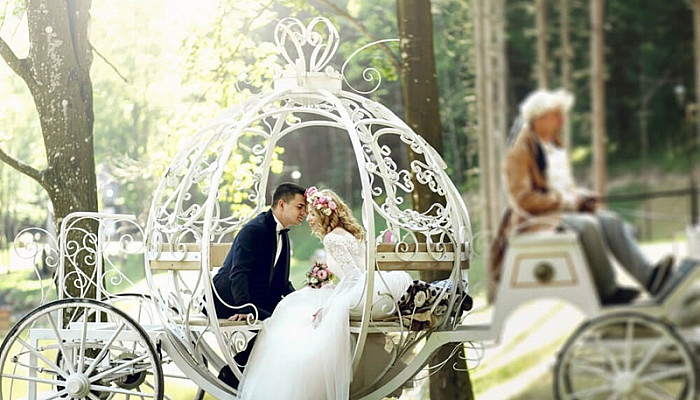
Unveiling the Tale of Wedding Dress Fabrics and Materials

Selecting the perfect wedding dress involves more than just choosing a flattering silhouette; it's also about understanding the myriad fabrics and materials that contribute to the gown's overall look and feel. From timeless classics like silk and satin to intricate lace and airy chiffon, each fabric brings a unique texture, drape, and aesthetic to the bridal ensemble. Let's dive into the enchanting world of wedding dress fabrics, exploring their characteristics, popular choices, and the magic they weave into the bride's special day.
Classic Elegance

1. Silk
Renowned for its luxurious feel and natural sheen, silk is a timeless choice for bridal gowns. It drapes beautifully and comes in various types, such as silk charmeuse, satin, and dupioni, each offering a different texture and weight.
2. Satin
Satin, a smooth and glossy fabric, is characterized by its high luster on one side and matte finish on the other. Its heavy weight and structured drape make it ideal for ball gowns and formal wedding dresses.
3. Taffeta
Taffeta is a crisp, lightweight fabric with a subtle sheen. Its rustling quality adds a touch of drama to ball gowns and A-line dresses. Taffeta can also hold its shape well, creating voluminous skirts.
4. Charmeuse
Known for its silky, lightweight, and draping qualities, charmeuse is a smooth fabric that beautifully contours the body. It is often used for slip-style or sheath wedding dresses.
5. Dupioni
Dupioni silk, characterized by its slubbed texture and crisp feel, adds subtle texture and depth to wedding dresses. Its natural irregularities make each gown unique.
Light and Airy

6. Chiffon
Chiffon, a sheer and lightweight fabric, creates a dreamy and ethereal effect. Ideal for overlays, sleeves, or full dresses, chiffon adds a soft and romantic touch.
7. Georgette
Georgette is a slightly heavier and more textured version of chiffon. Its crinkled surface adds dimension, making it an excellent choice for bohemian or beach wedding dresses.
8. Organza
With a sheer and crisp finish, organza is often used for layered skirts or overlays. It provides structure while maintaining an airy quality, perfect for creating a princess-like effect.
9. Voile
Voile is a lightweight and semi-sheer fabric with a soft drape. Its breathable nature makes it suitable for summer weddings, imparting a delicate and feminine touch.
10. Tulle
Tulle is a fine netting fabric that adds volume and romance. Often used in ballerina skirts and veils, tulle creates a soft and whimsical look.
Timeless Texture
11. Lace
Lace, an intricate and delicate fabric, adds a touch of romance and vintage charm. From Alenon to Chantilly, lace comes in various types, each with its unique pattern and character.
12. Damask
Damask is a woven fabric featuring elaborate patterns. While not as common in wedding dresses, it can add a regal and textured element to gowns.
13. Brocade
Brocade is a heavy, richly decorative fabric with raised patterns. It adds opulence to wedding dresses, making them suitable for winter weddings or formal affairs.
14. Point d'Esprit
Point d'Esprit is a delicate netting fabric adorned with small embroidered dots. This adds a subtle texture and whimsical touch to wedding dresses.
Structured Sophistication
15. Faille
Faille is a tightly woven, ribbed fabric that provides structure and a subtle sheen. It's often used for structured wedding dresses with clean lines.
16. Gazar
Gazar is a heavyweight silk fabric with a crisp texture, perfect for creating structured and architectural wedding dresses.
17. Mikado
Mikado is a heavyweight silk fabric known for its slight sheen and substantial feel. It adds structure to wedding dresses while maintaining a luxurious appearance.
18. Moire
Moire is characterized by its watermarked appearance and wavy pattern. It adds a unique texture to wedding dresses, creating visual interest.
19. Zibeline
Zibeline, also known as sable or mikado, is a luxurious fabric with a smooth finish and a subtle sheen. It provides structure and sophistication to wedding dresses.
Unique and Unconventional

20. Velvet
Velvet, a plush and luxurious fabric, adds a touch of vintage glamour to wedding dresses. It's suitable for fall or winter weddings, providing warmth and opulence.
21. Wool
While unconventional for wedding dresses, wool can be used for winter weddings, creating a unique and textured look.
22. Dotted Swiss
Dotted Swiss is a sheer fabric adorned with small, evenly spaced dots. It adds a playful and whimsical touch to wedding dresses.
23. Shantung
Shantung is a textured silk fabric with a raw, nubby surface. It adds a natural and organic feel to wedding dresses.
24. Polyester, Rayon, and Blend Fabrics
While natural fibers like silk are popular, synthetic fabrics like polyester and rayon are often used for budget-friendly wedding dresses. Blended fabrics offer a balance of affordability and certain desired characteristics.
You may also like to read: Creating a Custom Wedding Dress: Crafting Perfection
Conclusion
Understanding these diverse wedding dress fabrics empowers brides to make informed choices that align with their style, comfort, and the overall theme of their wedding. Whether opting for the classic elegance of silk or the airy romance of chiffon, each fabric weaves its own tale into the bride's journey toward marital bliss. As the bride walks down the aisle, the chosen fabric becomes a tangible expression of her unique style, capturing the essence of a love story that is as individual as the gown she wears.
This content was created by AI





















